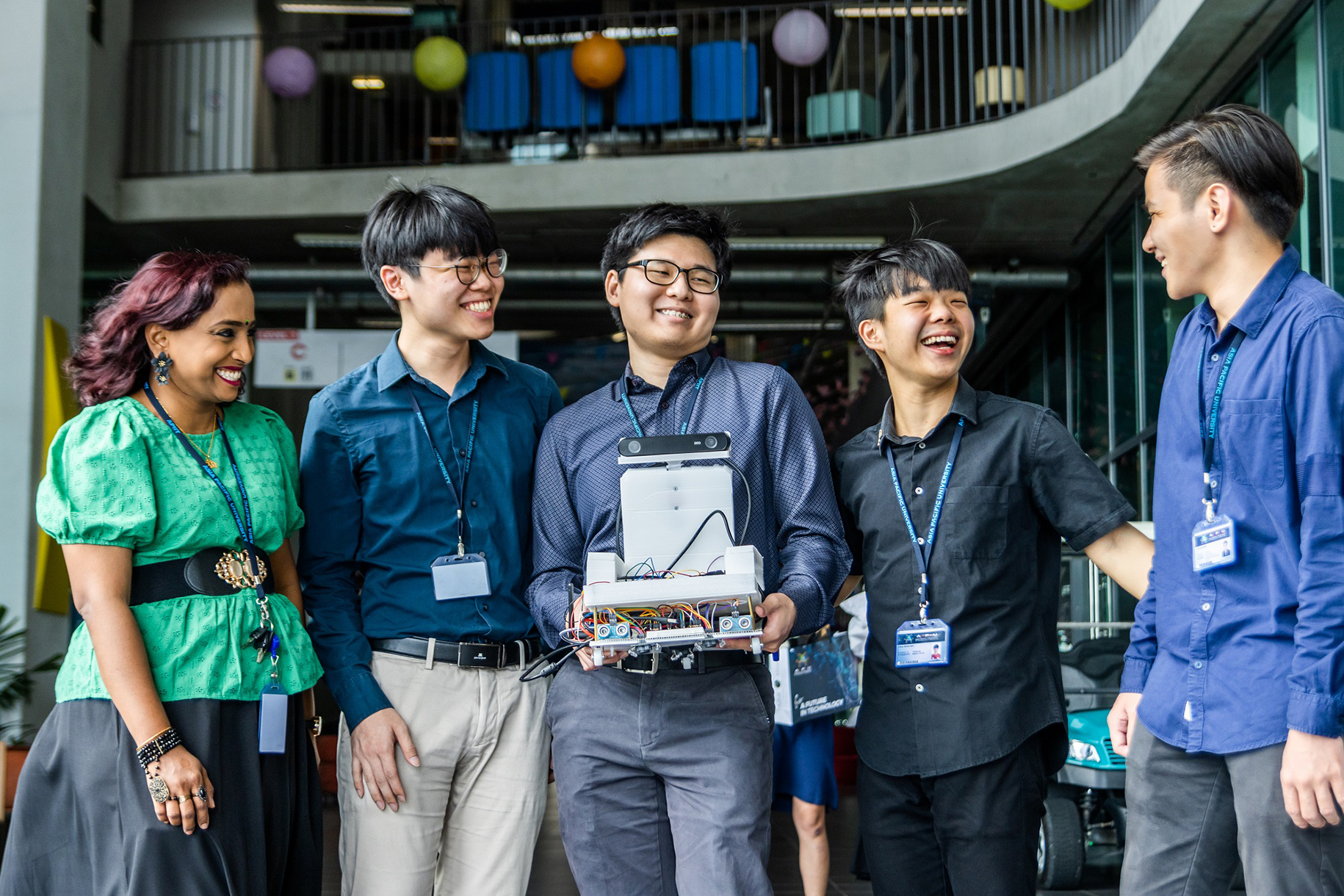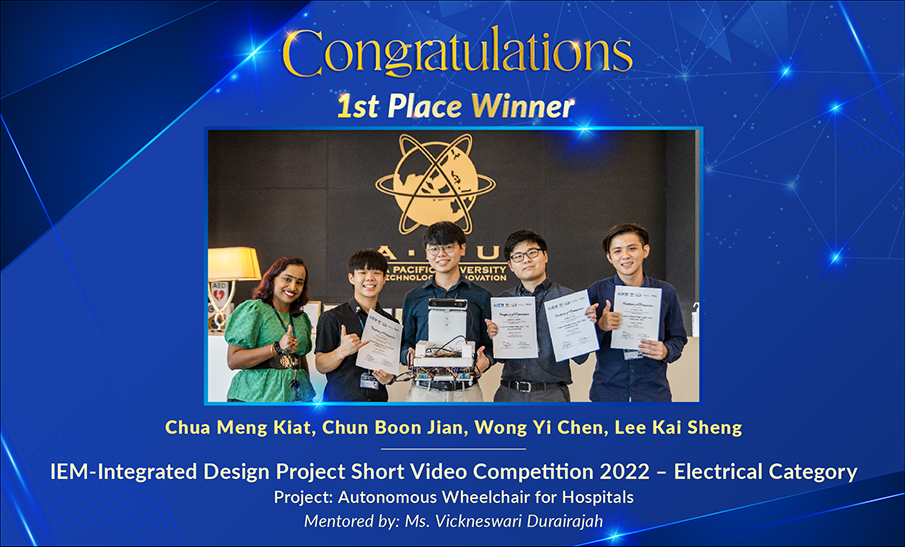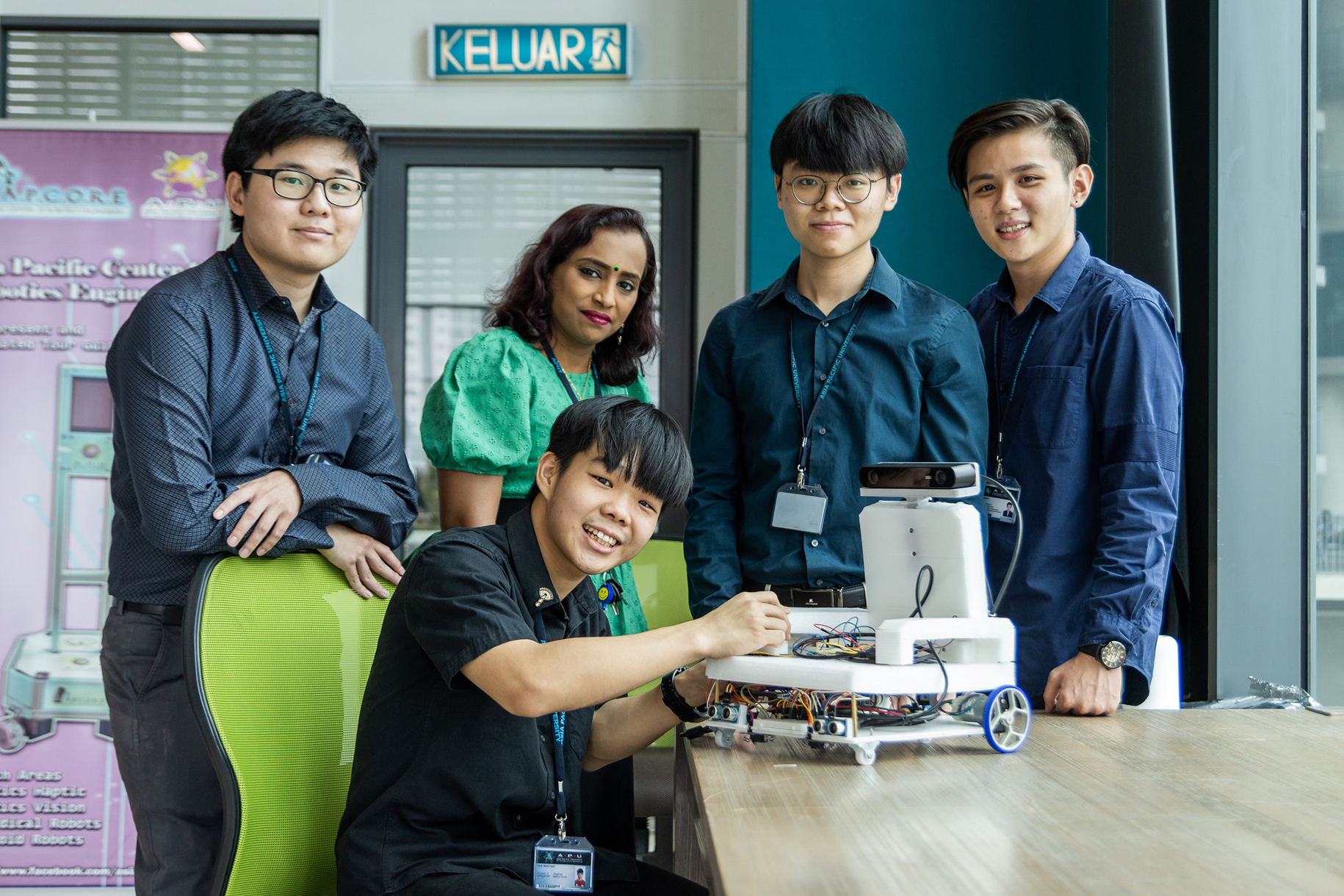You are here
Autonomous Wheelchair Prototype Won First Place In IEM Competition

According to the World Health Organization (WHO) data, 75 million people need a wheelchair daily. This represents 1% of the world’s population. To ease the mobility challenges faced by wheelchair-bound patients and hospital workers, four engineering students from Asia Pacific University of Technology & Innovation (APU) came up with an autonomous wheelchair prototype.
The team submitted their innovative Group Design Project titled “Autonomous Wheelchair for Hospitals” to the Integrated Design Project Short Video Competition 2022, organised by the Engineering Education Technical Division of the Institution of Engineers Malaysia (IEM). The project was adjudged First Place winner in the Electrical category.
The Group Design Project (GDP) is one of the Year-4 modules that provide students with the skills and knowledge in project management, design and development of a prototype to solve a real-world engineering problem. The theme set for this GDP module was “Disabled Assistive”.

Led by Chua Meng Kiat, a Bachelor of Engineering in Electrical & Electronic Engineering student, the team is comprised of final year Bachelor of Engineering in Mechatronic Engineering students – Chun Boon Jian, Wong Yi Chen, and Lee Kai Sheng.
They were in awe as they defeated the other teams from public and private universities. The judging panel was made up of industry capstone or project coordinators and industrial engineers.
Supervised by Ms. Vickneswari Durairajah, a lecturer in the School of Engineering, the team produced a five minutes video presentation based on the completed capstone GDP for this competition.
“The autonomous wheelchair consists of four main features – wheelchair navigation, obstacles detection and avoidance, emergency purpose feature, and voice command. Each of us handled the respective function individually,” explained Chua.
The system was designed in a way that the data extracted from the wheelchair is monitored remotely at the base station using Internet-of-Things (IoT). This means patients can be moved around by the hospital staff remotely, hence easing their workload and improving the workflow.

This wheelchair designed by the APU team is navigated by following the lines on the floor using colour sensors. At junctions, there will be colour indicators on the line path to determine the direction that the wheelchair has to take. Along the way, ultrasonic sensors and stereo cameras are used to detect obstacles.
In case of an emergency, hospital staff at the base station can press a panic button sending the signal to the wheelchair through Wi-Fi and Message Queuing Telemetry Transport (MQTT). This will either stop the wheelchair or change its direction to the emergency exit.
Patients can also speak into the microphone in the wheelchair and provide programmed instructions like “Stop” – to stop any movement; and “Resume” – to allow the standstill wheelchair to continue moving to its destination.
The technicality involved convinced the judges, and Chua enthused, “Thanks to the judges for recognising our project. We are delighted, surprised, and thankful for the achievement. This project challenged me in brushing up on my time, people, and work management skills. I would like to give credit to our module lecturer-cum-project supervisor – Ms. Vickneswari, for providing us with extensive support and advice for our project.”
Delighted in her students’ achievement, Ms. Vickneswari opined, “Winning is not something that can be achieved overnight, it is achieved through dedication, motivation, and the drive to achieve something in life. I believe the team’s outstanding contribution via teamwork and time management as well as good communication skills enabled them to clinch First Place in this competition.“


